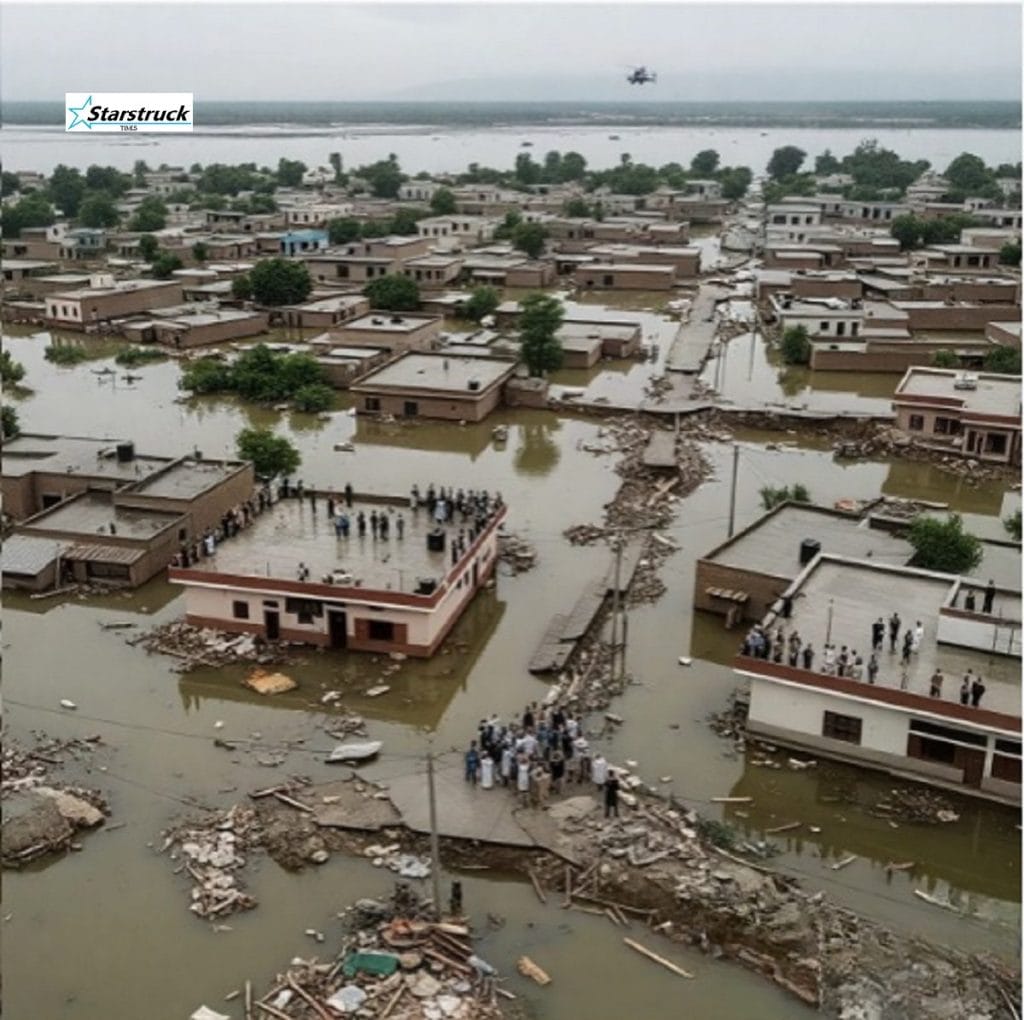Islamabad (Star Struck Times) — A strong weather system is poised to bring wind-driven thundershowers across northern Pakistan’s most vulnerable regions, with the Pakistan Meteorological Department (PMD) issuing alerts for the next 24-36 hours covering Azad Kashmir, Islamabad, upper parts of Punjab and Khyber Pakhtunkhwa (KP).
This comes as the seasonal forecast had already indicated a “normal to slightly above-normal rainfall” tendency over central and northern zones for the August–October period, raising concerns of isolated heavy downpours.
According to the PMD, gusty winds with embedded thunder-showers may arrive late Sunday night and persist intermittently into Monday evening, especially over the hilly and foothill areas of Kashmir and KP. Islamabad and upper Punjab’s adjoining terrains are also on notice. The advisory highlights risk of 30–50 km/h winds, thunder-storm activity and localized heavy rain.
Regional disaster management officials have been asked to ready response teams and advise communities to keep drainage channels clear and avoid open terrain.
“This kind of system, though short-lived, can trigger flash runoff in our steep slopes and rapid rises in nullah flows,” a PMD forecaster told Star Struck Times, adding that windows of 1–2 hours may witness sharp bursts of rainfall. The forecaster emphasised that although not a full-blown monsoon event, the setting could provoke higher-than-normal immediate impacts given the terrain and season.
Public reaction on social media has ranged from alert to caution. One Islamabad resident posted: > “Just when we thought things were calming, PMD says ‘wind + thunder’ tonight — putting the kids to bed early and unplugging appliances.”
A community volunteer in Muzaffarabad (Azad Kashmir) remarked: > “Our drains are clogged after last week’s rain; hope we’re ready if this blows up into something.”
In its statement, the PMD urged motorists to reduce speed on slick roads, pedestrians to avoid sheltering under trees during gusty winds and said power-distribution companies should stand ready for any line-tripping. The agency also reminded that while October normally brings dry conditions—with Islamabad averaging just four rainy days and about 35 mm of rain for the month according to long-term averages—this deviation warrants increased vigilance.
“Communities in valleys, near waterways and nullahs must stay alert tonight and tomorrow morning,” said Islamabad Capital Territory’s Emergency Services spokesperson. “Although this is not a large-scale monsoon system, even a few intense downpours can cause serious surface water flow, especially where drainage is poor.”
Local officials in upper Punjab have likewise mobilised teams to respond to any localized flooding or wind-related damage.
Experts remind that Pakistan’s northern regions, especially mountainous zones like KP and Kashmir, have seen increased variability in rainfall patterns amid changing climatic conditions. While full-fledged monsoon spells have ended, western disturbances and ‘thunder-wind’ events remain a risk into the autumn.
For residents: keep umbrellas or raincoats handy, avoid parking under weak tree-canopies, clear gutters if you’re in low-lying areas and monitor local media for updated warnings. Response units recommend avoiding intentional river or nullah crossings during storm bursts.
Stay tuned for further updates as the event unfolds and whether the system evolves or weakens overnight.
FAQ
Q: Where exactly are the alerts active?
A: The advisory covers Azad Kashmir, Islamabad, upper Punjab (especially hilly and adjoining zones) and Khyber Pakhtunkhwa.
Q: Is this part of the monsoon?
A: No — the monsoon season has largely passed, but the PMD notes normal to slightly above-normal rainfall potential in the region this period.
Q: What are the main risks?
A: The main risks are intense thunder-wind bursts, heavy rain over short periods causing surface water flow, potential flash runoff in steep terrain, and wind damage to weak structures.
Q: How long will it last?
A: The system is expected to move in late Sunday into Monday evening, with intermittent activity. The more intense window may last 1–2 hours when the system hits.
Q: What should I do?
A: Stay alert to updates, clear drainage if you’re in low-lying zones, avoid being under trees or near nullah banks during gusts, and avoid water crossings when rainfall is intense.










